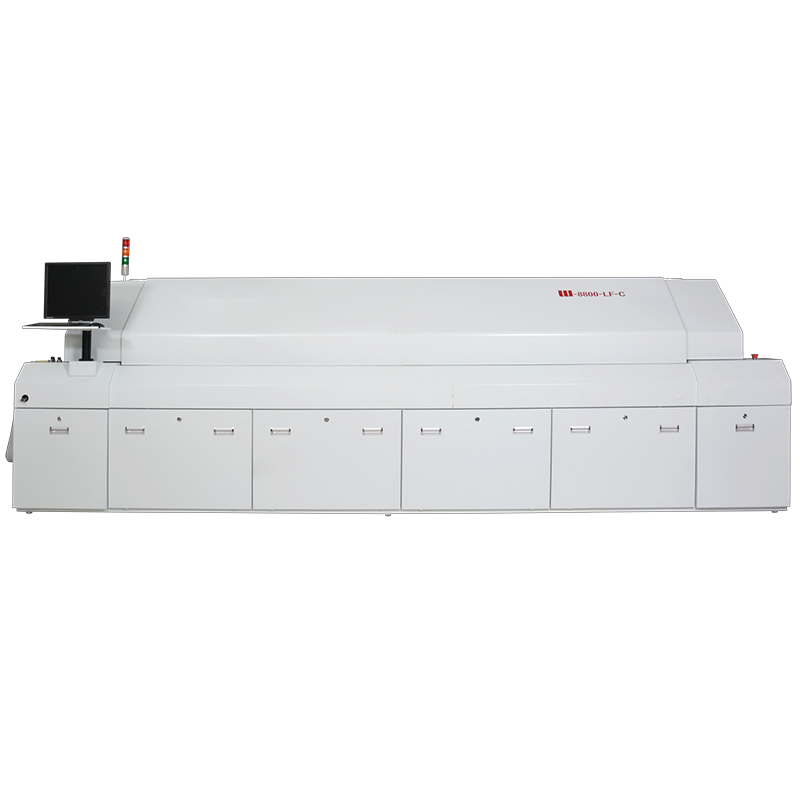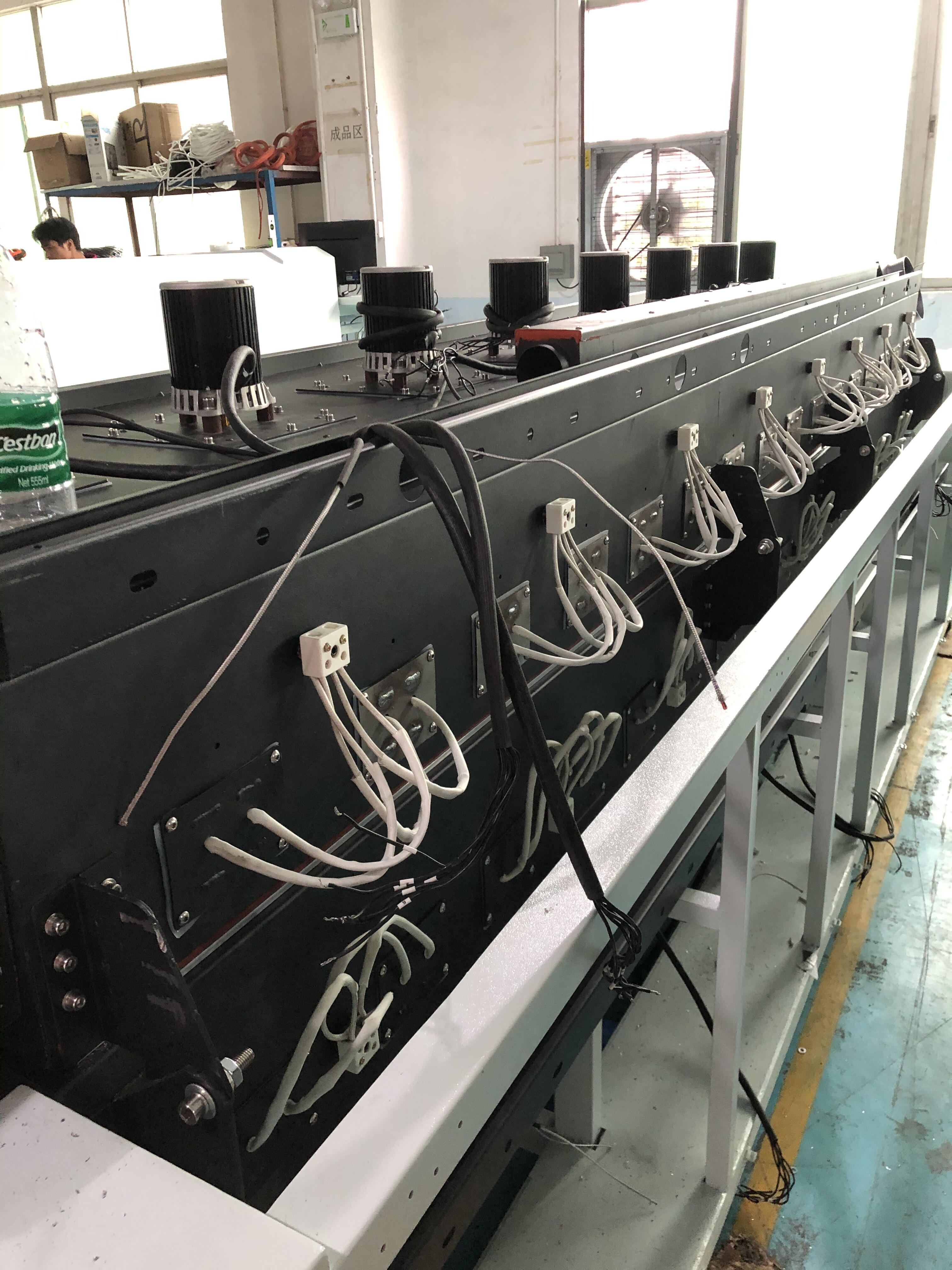Error de formato de correo electrónico
emailCannotEmpty
emailDoesExist
pwdLetterLimtTip
inconsistentPwd
pwdLetterLimtTip
inconsistentPwd


SMT Reflow Oven Price: A Comprehensive Guide for Buyers
The SMT reflow oven is a critical piece of equipment in the electronics manufacturing industry. Understanding the SMT reflow oven price, and the factors influencing it, is essential for any company looking to invest in reliable and efficient reflow technology. In this comprehensive guide, we'll explore the various aspects that affect the cost of SMT reflow ovens, provide insights into finding a reputable lead-free reflow oven supplier, and discuss how to choose the right oven for your specific needs.
What is an SMT Reflow Oven?
An SMT (Surface Mount Technology) reflow oven is a machine used to solder surface-mount electronic components to printed circuit boards (PCBs). The reflow process involves applying solder paste to the PCB, placing components on the board, and then passing the assembly through the reflow oven. The oven heats the assembly to a specific temperature profile, melting the solder and creating reliable electrical connections.
Key Factors Influencing SMT Reflow Oven Price
1. Oven Type
There are different types of SMT reflow ovens, each with distinct features and price points. The most common types are:
Convection Reflow Ovens: These use heated air to transfer heat to the PCBs. They are popular for their uniform heating and efficiency.
Vapor Phase Reflow Ovens: These use a liquid with a specific boiling point to transfer heat. They are known for precise temperature control but tend to be more expensive.
Infrared Reflow Ovens: These use infrared radiation to heat the PCBs. They can be less expensive but might require more careful temperature control.
2. Size and Capacity
The size and capacity of the reflow oven are significant factors in determining its price. Larger ovens with higher throughput capabilities generally cost more. It's crucial to assess your production volume needs and choose an oven that matches your requirements without overpaying for unnecessary capacity.
3. Temperature Control and Uniformity
High-quality temperature control and uniformity are critical for achieving reliable solder joints. Ovens with advanced temperature control systems and better uniformity tend to be more expensive but offer greater consistency and reliability in the soldering process.
4. Zone Configuration
SMT reflow ovens are configured with multiple heating zones, typically ranging from four to twelve or more. More zones allow for more precise temperature profiling and control, which can improve solder quality but also increase the oven's cost.
5. Lead-Free Compatibility
With the industry shift towards lead-free soldering, it's important to ensure your reflow oven is compatible with lead-free processes. Lead-free reflow ovens often require higher temperatures and better control, which can influence the overall price. Partnering with a reputable supplier can ensure you get an oven that meets these standards.
6. Brand and Manufacturer
The brand and manufacturer of the reflow oven play a significant role in its pricing. Established brands with a reputation for quality and reliability often charge a premium for their products. However, investing in a reputable brand can save money in the long run by reducing downtime and maintenance costs.
7. Additional Features and Automation
Modern SMT reflow ovens come with various additional features such as:
Automated conveyor systems: For continuous production lines.
Real-time monitoring and control: For enhanced process oversight.
Data logging and traceability: For quality control and process documentation.
These features can improve efficiency and process control but also add to the initial investment.
Understanding the Market: SMT Reflow Oven Price Ranges
Entry-Level Reflow Ovens
Entry-level SMT reflow ovens are designed for small-scale production or prototyping. These ovens typically cost between $5,000 and $20,000, depending on the features and specifications. They offer basic functionality and may lack some advanced controls and automation found in higher-end models.
Mid-Range Reflow Ovens
Mid-range reflow ovens are suitable for medium-sized production runs. Prices for these ovens range from $20,000 to $50,000. They offer a balance between cost and performance, with better temperature control, more zones, and additional features like data logging.
High-End Reflow Ovens
High-end SMT reflow ovens are designed for large-scale production and demanding applications. These ovens can cost anywhere from $50,000 to $150,000 or more. They offer superior temperature control, multiple heating zones, and advanced automation and monitoring features.
Choosing the Right SMT Reflow Oven for Your Needs
Assessing Your Production Requirements
Before investing in an SMT reflow oven, it's crucial to evaluate your production needs. Consider the following questions:
What is your expected production volume?
What types of PCBs and components are you working with?
Are you using lead-free soldering processes?
Do you require advanced features such as real-time monitoring and automation?
Budget Considerations
Determine your budget for the reflow oven purchase. While it's important to invest in quality equipment, you should also avoid overspending on features you may not need.
Compare different models and brands to find a balance between cost and functionality.
Researching Reflow Oven Suppliers
Finding a reputable supplier is essential for ensuring you get a reliable and efficient machine. Look for suppliers with a proven track record, positive customer reviews, and excellent after-sales support. Don't hesitate to ask for references and check their reputation in the industry.
Future-Proofing Your Investment
Consider the long-term needs of your business when selecting an SMT reflow oven. Investing in a slightly more advanced model with features that support future growth can save you money and hassle down the line.
Maintenance and Operating Costs
Regular Maintenance
Regular maintenance is vital to keep your reflow oven operating at peak performance. Maintenance costs can vary depending on the oven type and usage. Be sure to factor in the cost of spare parts, routine inspections, and any necessary repairs.
Energy Consumption
Energy consumption is a significant ongoing cost associated with SMT reflow ovens. More advanced ovens with better insulation and energy-efficient designs can help reduce operating costs. Evaluate the energy efficiency of different models and consider the potential savings over time.
Training and Expertise
Operating an SMT reflow oven requires skilled personnel. Ensure your team is properly trained to use and maintain the equipment. Investing in training can prevent costly mistakes and improve overall production efficiency.
Advances in Reflow Oven Technology
Improved Temperature Control Systems
Modern SMT reflow ovens feature advanced temperature control systems that provide precise and uniform heating across the PCB. This ensures reliable solder joints and reduces the risk of defects.
Enhanced Automation
Automation in reflow ovens has improved significantly, with features like automated conveyor systems, real-time monitoring, and remote control capabilities. These advancements enhance production efficiency and allow for better process control.
Environmental Considerations
With growing environmental concerns, many manufacturers are focusing on making their reflow ovens more eco-friendly. This includes reducing energy consumption, using environmentally friendly materials, and ensuring compliance with industry standards for lead-free soldering.
Case Studies: Real-World Examples
Case Study 1: Small Electronics Manufacturer
A small electronics manufacturer needed to upgrade its outdated reflow oven to meet increasing production demands. After evaluating their needs and budget, they opted for a mid-range convection reflow oven with enhanced temperature control and data logging features. The new oven improved their production efficiency, reduced defects, and provided valuable data for process optimization.
Case Study 2: Large-Scale Production Facility
A large-scale production facility specializing in consumer electronics required a high-capacity reflow oven to handle their high-volume production. They chose a high-end reflow oven with multiple heating zones, advanced automation, and energy-efficient design. The investment paid off with increased throughput, lower operating costs, and improved product quality.
Tips for Maximizing Your Reflow Oven Investment
Regular Calibration and Maintenance
Keep your reflow oven in top condition by performing regular calibration and maintenance. This ensures consistent performance and extends the lifespan of the equipment.
Monitoring and Data Analysis
Utilize the monitoring and data logging features of your reflow oven to analyze production processes and identify areas for improvement. This can help you fine-tune your processes and reduce defects.
Continuous Training
Ensure your team receives continuous training on the latest techniques and best practices for operating and maintaining the reflow oven. This keeps your staff skilled and knowledgeable, minimizing the risk of errors.
Partnering with a Reliable Supplier
Working with a reliable lead-free reflow oven supplier ensures you have access to high-quality equipment, expert advice, and excellent after-sales support. A good supplier can also help you stay updated on the latest industry trends and advancements.
Conclusion
Understanding the SMT reflow oven price and the factors influencing it is essential for making an informed investment in this critical piece of equipment. By carefully assessing your production needs, researching suppliers, and considering long-term requirements, you can choose the right reflow oven that meets your budget and performance criteria. Regular maintenance, proper training, and leveraging advanced features can further enhance your investment, ensuring reliable and efficient production processes. Whether you are a small manufacturer or a large-scale producer, a well-chosen SMT reflow oven can significantly impact your production quality and efficiency.

